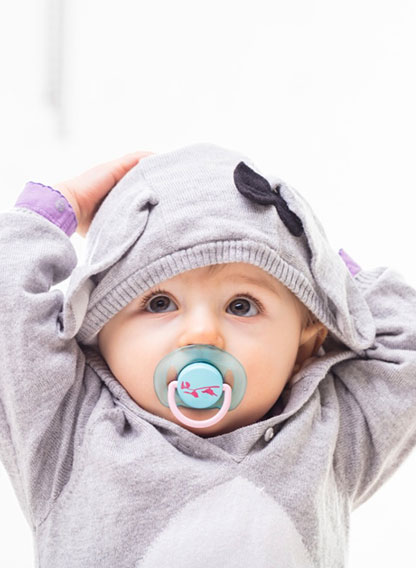Pacifier use is a common practice among parents to soothe infants, but it’s important to understand both the benefits and potential risks, especially from a myofunctional and dental perspective. Here is an educational breakdown:
Benefits of Pacifier Use
Soothing and Comfort: Pacifiers can help sooth a fussy baby, reduce crying, and provide comfort.
Sleep Aid: They may help babies fall asleep and stay asleep longer by providing a sense of security.
SIDS Risk Reduction: Some studies suggest that pacifier use during sleep may reduce the risk of Sudden Infant Death Syndrome (SIDS).
Potential Downside and Concerns
1.Dental Issues:Prolonged pacifier use (especially beyond the age of 2-3 years) can lead to dental problems, such as misaligned teeth (open bite, crossbite) or changes in the shape of the palate. These issues can sometimes require orthodontic treatment later in life.
2.Impact On Oral and Facial Development: Extended pacifier use can affect the development of oral and facial muscles. This can influence the positioning of the tongue and lead to problems with swallowing, speech and even breathing.
3. Potential for Ear Infections:Studies have linked prolonged pacifier use with an increased risk of middle ear infections, particularly after the age of 6 months.
4. Dependency: Babies may become dependent on pacifiers for comfort, which can make it challenging to wean them off as they get older.
Recommendations for Pacifier Use
1. Limit Use: Avoid introducing the pacifier until breastfeeding is well established (typically 3-4 weeks)., to prevent nipple confusion.
Limit pacifier use to sleep times and avoid using it as the primary method of soothing, particularly as the child grows older.
2. Gradual Weaning: Begin to wean your child off the pacifier around 6-12 months, when the risk of SIDS decreases and the likelihood of developing dental problems increases with continued use.
3. Encourage Other Comfort Strategies: Gradually replace pacifiers with other forms of comfort, such as cuddling, soft toys, or blankets, to reduce reliance on the pacifier.
4. Proper Cleaning and Hygiene: Ensure pacifiers are regularly cleaned and replaced if damaged to prevent infections or choking hazards.
Consultation with Professionals
Pediatric Dentist: Regular dental checkups can help monitor any potential impact on your child’s teeth and oral development due to pacifier use.
Myofunctional Therapist: If there are concerns about your oral muscle development or if your child has difficulty weaning from the pacifier, a myofunctional therapist can offer specialized exercises and guidance.
By understanding the benefits and being mindful of the potential drawbacks, pacifiers can be used in a way that supports your child’s development and well-being.
